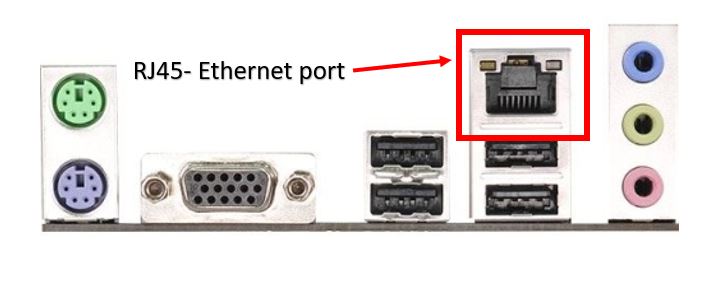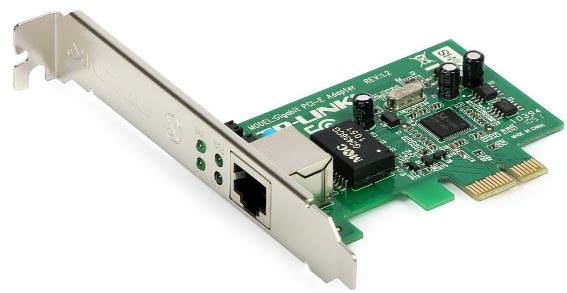We almost every time need to connect our computer to the internet through a network or any other device depending upon how the internet service provider delivers an internet connection to our houses or offices. In today’s world of technology, the simplest way to connect to the Internet is through an ethernet cable, which can hence be connected to the internet through a router, DSL modem, or optical fibre.
Whatever may be the mode of connection, our computer connects to the nearest network device like the DSL modem or router through something called the Network Interface Card. network interface aka. NIC card comes with the necessary circuitry to convert the signals that come from networking devices to something that can be understood by our computers.
What is a Network Interface Card?
For the most part, the Network Interface Card is a kind of interface that is compatible with the nearest networking device to connect to our computers.
Ethernet is the simplest form of connection to get access to the internet on computers, laptops, etc., and depending upon the motherboard that you are using you might already have a dedicated Gigabit Ethernet port, or you might have to purchase one from the market and connect it to the computer through some already existing interface.
So if you are purchasing any device that will add an Ethernet port to a computer most users name it a Network Interface Card or an Ethernet card. To most people, a Network Interface Card and Ethernet card are similar but it is not so. so I will discuss the differences between Network Interface Card and Ethernet card here.
Hence, without any further delay, get started with the differences between a Network Interface Card and an Ethernet card, that you should know before you go shopping one of them.
Ethernet card
Let me first talk about a dedicated Ethernet card, which adds an Ethernet port to a computer through some already existing hardware interface. If the computer already has an Ethernet port (RJ45) then you can simply connect your router or any other Ethernet cable to that, and such motherboard is considered to have an integrated Ethernet card. However, you can also get one from the market if your Ethernet port is damaged or you are not getting the rated speeds.

PCIe Ethernet Cards
Most users will go to the computer store and ask for a Network Interface Card and the salesman will give him a PCIe Ethernet card in most cases. In most cases, an Ethernet card can be connected to the PCIe or PCI Express slot on the computer so that it can be connected to a network. The PCIe Slot is the same slot, where you will connect a graphics card, sound card, or any other additional peripheral to your computer.

USB Ethernet Cards
But, if you are having a laptop or you don’t have any free PCIe slots on your computer and you want to get an extra Ethernet port, just in case you don’t have one, or it is damaged, you can also go for an USB-based Ethernet card, which will be connected through a free USB slot on your computer to get connected to a network and hence the internet. Basically these are the two ways you can connect to a network using an Ethernet port.

Which is better between PCIe and USB Ethernet?
Talking about which one is better between the PCIe-based Ethernet cards and the USB Ethernet cards, it will depend upon the performance that you are looking for. If you don’t have a free PCIe slot available, a USB Ethernet card is the only option remaining for you. However, if you are looking for the best performance and you don’t have a problem opening the computer case, the PCIe-based Ethernet cards are the best you can go for.
With 16 lanes on a PCIe 6.0 slot, you can get theoretically maximum speed up to 128 GB per second which is limited to only 5 GB per second on the latest USB 3.0 standards. On the other hand, even with a PCIe 3 slot, which is most common for Ethernet cards, you can get 15 GB per second with 16 lanes, and with older USB standards, the USB 2.0 and others, the speeds are even lower. Though these are theoretical maximum speeds, and the best you can get out of a Gigabit Ethernet port is 1,000 Megabits per second.
But, the comparison can be useful for you to understand which one will be the best bet for you. However, the actual performance will definitely depend upon the manufacturer of the product that you are going for and also the specifications. But for the most part, PCIe-based Ethernet cards will give you the optimal performance that you are looking for.
Network Interface Card
Talking about Network Interface Cards, it is actually a domain of computer hardware that is used to connect a computer to a network or the internet. So if you talk about Ethernet cards, they are a subdomain of the Network Interface Cards. So, if you are connecting your computer to the internet through Wi-Fi, Ethernet or not so widespread Bluetooth connectivity, the device that you are using to connect your computer to any such network is also a Network Interface Card. So a Network Interface Card can be a small USB dongle that enables Wi-Fi on your computer to a small Bluetooth dongle and the Ethernet card that I have discussed above.
However, most computer stores will give you an Ethernet card, if you ask for a Network Interface Card. The reason is, till a few years ago, dedicated Ethernet cards were popular and that was by far the most popular mode of connection to connect a computer to the network. Even today, if you go to the computer store to purchase a Wi-Fi dongle, you will mostly ask for a dongle, instead, that will make your computer Wi-Fi enabled.
So, a Network Interface Card, in simple terms is a device that opens up some kind of interface to connect your computer to the internet or any network. Network Interface Cards can give you an Ethernet interface, USB interface or wireless interface depending upon which product you are exactly going for.
Today, you can even find some Ethernet cards, which also has a Wi-Fi interface that can help you connect your computer to an existing Wi-Fi network or convert your computer to a Wi-Fi hotspot with the appropriate software.
So, a Network Interface Card offers an interface to the computer to get connected to some network and finally to the internet. If a Network Interface Card comes with an ethernet interface where an Ethernet port can be connected for that particular Network Interface Card you can alternatively call it an Ethernet card.
On most Ethernet cards, you can even have multiple Ethernet ports, and some can even have an antenna so that the computer can even connect to wireless networks.
That was all about the difference between Network Interface Cards and Ethernet cards. Do you have any questions in mind? Feel free to comment on the same below.
Other Articles to read:
Related Posts
What is ipconfig on Windows CMD used for?
How to View Listening Ports Using Netstat
From Wi-Fi to Li-Fi: A Glimpse into the Future of Wireless Technology
Internet Web Cookies: A Guide to Personalized Privacy Online
7 Key Steps involved in creating a Home network from scratch
What is the difference between a WiFi and an Ethernet connection?